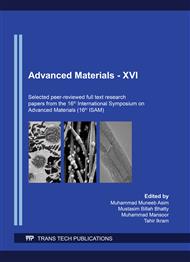p.10
p.15
p.23
p.29
p.35
p.42
p.49
p.55
p.60
Strip Size Optimization for Spiral Type Actuator Coil Used in Electromagnetic Flat Sheet Forming Experiment
Abstract:
Flat spiral coil for electromagnetic forming system has been modelled in FEMM 4.2 software. Copper strip was chosen as material for designing the actuator coil. Relationship between height to width ratio (S-factor) of the copper strip and coil’s performance has been studied. Magnetic field intensities, eddy currents and Lorentz force were calculated for the coils that were designed using six different 'S-factor' values (0.65, 0.75, 1.05, 1.25, 1.54 and 1.75), keeping the cross-sectional area of strip same. Results obtained through simulation suggest that actuator coil with S-factor ~ 1 shows optimum forming performance as it exerts maximum Lorentz force (84 kN) on work piece. The same coils was fabricated and used for electromagnetic sheet forming experiments. Aluminum 6061 sheets of thickness 1.5 mm have been formed using different voltage levels of capacitor bank. Smooth forming profiles were obtained with dome heights 28, 35 and 40 mm in work piece at 800, 1150 and 1250 V respectively.
Info:
Periodical:
Pages:
35-41
Citation:
Online since:
February 2021
Keywords:
Price:
Сopyright:
© 2021 Trans Tech Publications Ltd. All Rights Reserved
Share:
Citation:


